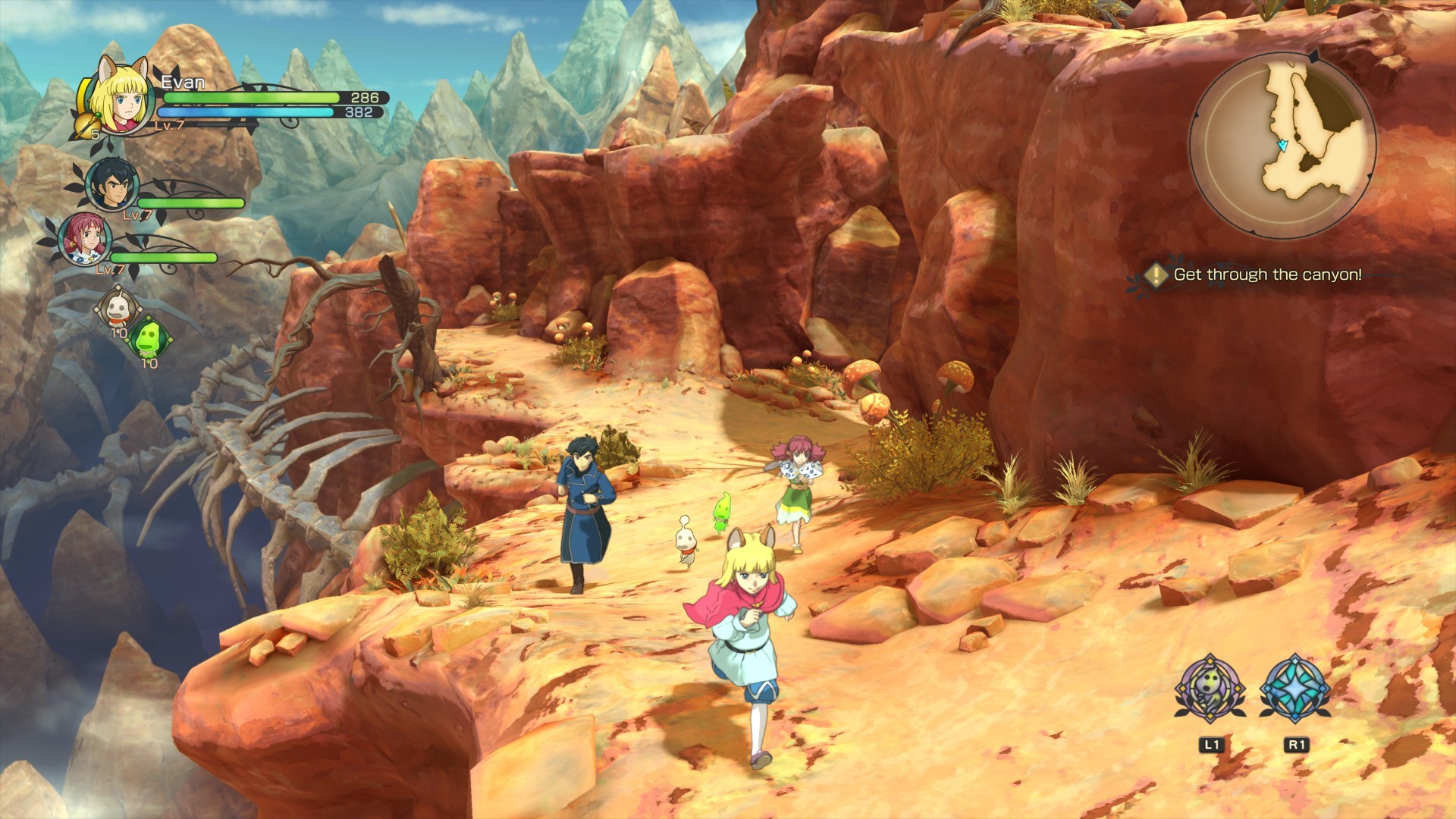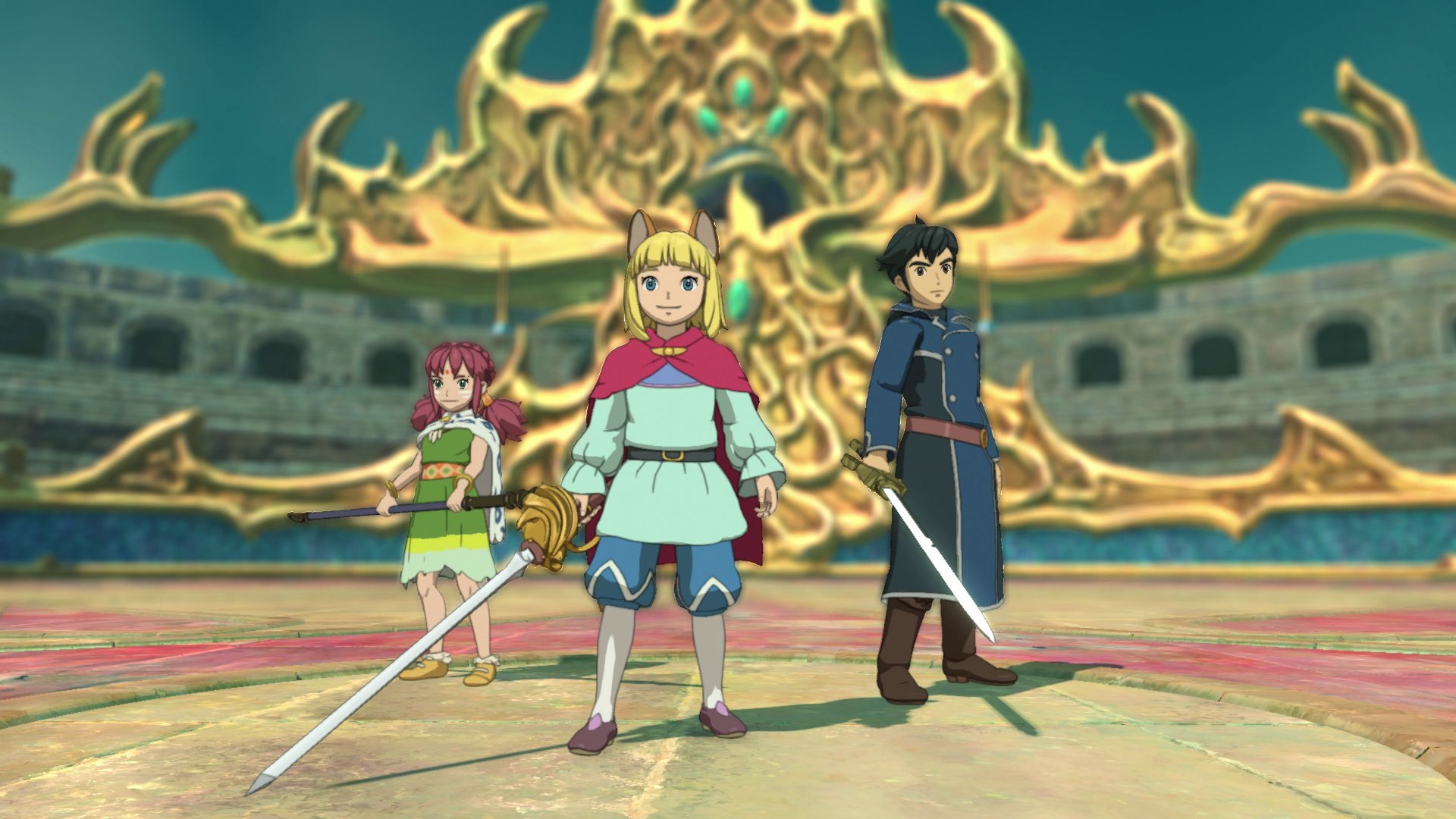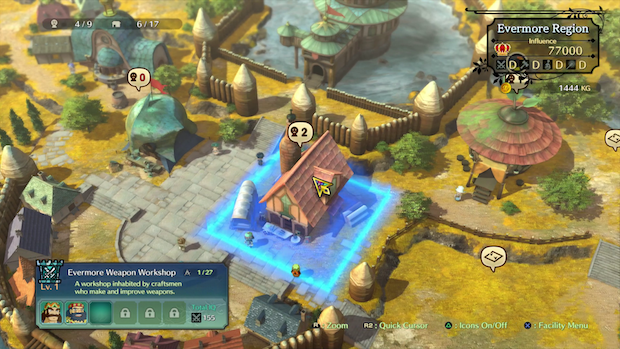
Ni no Kuni: Wrath of the White Witch was one of the most well-loved games of the previous generation. Its charming world and cast of characters, vibrant and beautiful visual palette, and classic JRPG charm endeared the game to almost everyone who played it. Though the game had some pretty major issues of its own, it nonetheless felt like a breath of fresh air in a time when the JRPG genre seemed to have stagnated and looked to be moving towards its demise. Ni no Kuni II: Revenant Kingdom has a lot of the same strengths that its predecessor did, such as its beautiful visuals, characters that you can invest in, and overflowing charm, but it also fixes many of the issues that plagued the first game.
Unlike its predecessor, however, Ni no Kuni II has released in a landscape where JRPGs are no longer stagnating- they’re resurgent. As recently as within the last couple of years, we’ve played some truly excellent games, including the likes of Xenoblade Chronicles 2, Persona 5, Final Fantasy 15, and Nier Automata, so the JRPG genre clearly isn’t in the kind of dire straits it was five or six years ago. As such, while people were more willing to forgive the original Ni no Kuni’s missteps, since it was a rare contemporary JRPG gem when it launched, such is not the case with Ni no Kuni II. And while none of the game’s issues are as annoying as the grinding and the annoying battles of the previous game were, they cannot be ignored.
"Ni no Kuni II: Revenant Kingdom has a lot of the same strengths that its predecessor did, such as its beautiful visuals, characters that you can invest in, and overflowing charm, but it also fixes many of the issues that plagued the first game."
In Ni no Kuni II, you play as a young boy named Evan, who used to be the king of Ding Dong Dell, but was ousted from his own kingdom after a violent coup. The central premise of the game is that Evan seeks to build a new kingdom, with his main goal being to bring the entire world under one, single, peaceful banner. As such, within the narrative there is a lot of interacting and negotiating with other cities and towns and a lot of conflict-resolution and quest-completion for other kingdoms. Ni no Kuni II’s narrative always moves at a brisk pace, and while this is a good thing in the sense that the game isn’t bogged down in sections that can kill the game’s pacing like so many other JRPGs can be, it also means that there are a few sections where important details are completely glossed over, or the game fails to spend enough time on major events or backstories. Where the narrative’s strengths really lie is in the characters it portrays.
Much of that is, in equal parts, due to the writing and the voice acting. Evan’s growth as both, a person and a king throughout Revenant Kingdom’s story is handled incredibly for the entirety of the game, but equally as well-developed and likeable are characters such as Roland and Shani. Evan’s friendships and interactions with the people he meets up with throughout the game are extremely well written, and lend the dynamics between these people a lot of believability. There are times, as seems to be the case with most JRPGs irrespective of the developer, when the script feels a bit too cheesy or exaggerated in its style, but these moments are the exception, not the rule.
The first thing you notice about Ni no Kuni II when the game boots up, however, is how beautiful it is. Unlike its predecessor, Studio Ghibli wasn’t involved in the development of Ni no Kuni II, but some key members from Ghibli still worked on the game with Level 5, and it completely shows. The cel-shaded visual style is strikingly beautiful- it grabbed my attention at first glance, and continued to stun me with consistently strong art design. Every location you visit has a distinct visual flair to it, from the extremely varied and personality filled cities to the dungeons and wide-open fields. The cutscenes, too, are beautifully directed- they no longer have the same wonderful anime-like charm that the first game’s cutscenes did, seeing as they’re now all in-engine, but in this particular case, “different” doesn’t necessarily mean “worse”.
"The cel-shaded visual style is strikingly beautiful- it grabbed my attention at first glance, and continued to stun me with consistently strong art design."
The beautiful visuals and the strong sense of artistic style, then, are some things that the two Ni no Kuni games have in common. The area where the second game differs from its predecessor quite heavily is the combat. While the battles in Wrath of the White Witch were one of the game’s biggest weaknesses, combat in Ni no Kuni II is very enjoyable and surprisingly deep. For starters, rather than being turn based, battles here take place in real time, and you have the complete freedom to move about the battlefield. You can control any one of your three party members at a time, but while you’re actually in the middle of battles, there’s plenty of stuff you actually need to take care of.
Your basic attacks include a light and heavy melee attack, attacks that do elemental damage, and ranged attacks. Moving around the battlefield and having to dodge enemy attacks is, of course, the most immediate actions you’ll be indulging in during fights, but you’ll also have to keep an eye on a few other things. Each character, for instance, can be equipped with up to three weapons, and as you use these weapons, a special attack is charged up for each one of them. Unleashing these charged attacks can be a useful trick in battles, especially some of the tougher ones, and knowing when to store up charged attacks and when to unleash them can be quite important at times. Some weapons can also have their own specific elemental types, which is something that can give you a serious edge in battles where some of the tougher enemies only have a few specific weaknesses. Combining these two things, switching in and out of weapons in the middle of fights adds an element of strategy to the proceedings.
And, of course, there are the Higgledies. Familiars were an important part of Wrath of the White Witch’s Pokemon-like collection and battling gameplay loop, and while on paper Higgledies are essentially their replacements, they function quite differently. Rather than being the focus of the battle, Higgledies are more of a support element in battles. For the most part, these creatures function autonomously, but you can occasionally trigger moves that can aid you in fights in a variety of ways. While some Higgledies might provide offensive support by turning into a canon and blasting away at airborne enemies or enemies that are tougher, others could provide you with useful stat buffs, while still others could chip in with precious healing support for you and your party members.
"While the battles in Wrath of the White Witch were one of the game’s biggest weaknesses, combat in Ni no Kuni II is very enjoyable and surprisingly deep."
All of these elements combine to make for a battle system that is fast, animated, and kinetic, and one that always keeps things moving. It has to be said that in the opening four or five hours of the game, the combat seems deceptively shallow- it looks nice and pretty with fluid animations, but at first, it doesn’t seem like there’s a lot more to the proceedings than what meets the eye. But once I started to understand the systems in place a little better and everything fell into place, Ni no Kuni II’s combat revealed of hidden depth. The fact that it takes so long to come into its own is a letdown for sure, but once it really gets going, the game’s combat feels exciting and deeply enjoyable.
The other element of the game that serves as one of its gameplay foundations is the kingdom building aspect, and it is this mechanic that really pulls the entire game together. Building Evan’s new idyllic kingdom isn’t just the narrative theme of Ni no Kuni II- it is something that defines, when all is said and done, the entire game. Building and managing your kingdom works a lot like it did in Suikoden. You’re in charge of everything from placing buildings and employing your citizens to upgrading your kingdom’s separate elements and recruiting new people and bringing them into the fold.
Most of the side quests in the game are connected to the kingdom building as well. Completing these quests allows you to recruit more people to join your kingdom, and you get to decide how they’ll contribute by deciding what kind of work they will be put to. Certain citizens are specialists at certain kinds of work, and making these right matches can result in some pretty major and useful rewards and upgrades, while upgrading your kingdom also levels up the Higgledies you use in battle. It’s all surprisingly deep and extremely engaging. It’s not a full-blown city builder, of course, but it’s an entire facet of the game that you can sink hours into, and not even for a moment does it feel like an ancillary activity or a waste of your time.
"The other element of the game that serves as one of its gameplay foundations is the kingdom building aspect, and it is this mechanic that really pulls the entire game together."
Another mechanic that is tied to the kingdom building in Ni no Kuni II is the army skirmishes, which sees you participating in simplistic RTS-like battles of armies against armies. Essentially, all you do here is control the positioning of your units, based on a rock-paper-style chain of weaknesses and strengths a la Fire Emblem. These battles are peppered in throughout the game (many of them are optional too), and while these are fun the first few times, after a while, I started losing interest. Unlike the kingdom building, which feels like a core part of the entire experience, these battles feel like they’ve been tacked on, and are far too shallow for them to be interesting beyond the first impression they make.
Ni no Kuni II has a lot of things going for it. Just like Wrath of the White Witch, it is a beautiful game that oozes charm and personality, a game that features an endearing cast of characters that you’ll want to invest in. But it also fixes some of its predecessor’s most major flaws. Ni no Kuni II’s combat system has a surprising amount of depth, much more than what meets the eye at first glance, while the kingdom building mechanics are also addictive and engaging. It’s got a lot of moving parts, but fortunately enough, it manages to pull them all together for a cohesive experience where everything you do is tied together, and never feels like a waste of your time. Ni no Kuni II isn’t quite as fresh or doesn’t have quite the same “wow” factor that its predecessor did, for obvious reasons, but this is still an extremely well-made game that you can easily pour dozens upon dozens of hours into.
This game was reviewed on the PlayStation 4.
Combat is fast and exciting and has surprising depth; Kingdom building is addictive and fun; Almost all your activities feed into a larger goal; Beautiful, vibrant visuals; Well-written, well-voiced, and well-developed characters.
Combat takes a while to come into its own; Storytelling is occasionally rushed; Skirmish battles feel shallow and tacked on.



















